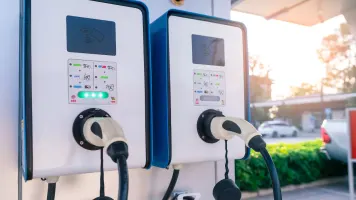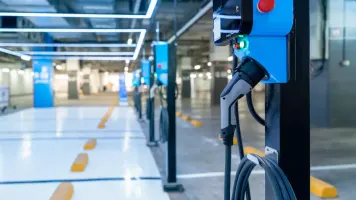Index
Introduction
The Race to Develop the Next-Generation EV Battery
The race to develop the next-generation EV battery has become a global phenomenon, driven by the urgency to transition to sustainable transportation and reduce our reliance on fossil fuels. As electric vehicles (EVs) gain popularity, the demand for high-performance, long-lasting, and cost-effective batteries has intensified. Leading companies, researchers, and innovators worldwide are investing significant resources into pushing the boundaries of battery technology. From breakthroughs in solid-state batteries to advancements in lithium-air and lithium-sulfur technologies, the quest for the ultimate EV battery is at the forefront of scientific and engineering pursuits. This article delves into the exciting developments, challenges, and potential implications of the race to develop the next-generation EV battery, exploring how these advancements could revolutionize the electric vehicle industry and shape the future of transportation as we know it.
Tesla aspires to be as helpful as possible to other car companies ~ Elon Musk.
History of EVs and Batteries

The history of electric vehicle (EV) batteries can be traced back to the late 20th century when researchers and manufacturers began exploring alternatives to traditional lead-acid batteries.
- Nickel-Metal Hydride (NiMH) Batteries: In the 1990s, NiMH batteries emerged as a popular choice for EVs due to their higher energy density and improved performance compared to lead-acid batteries. These batteries offered longer driving ranges and faster charging times, making them a significant advancement for electric vehicles.
- Lithium-Ion (Li-ion) Batteries: The introduction of lithium-ion batteries in the late 1990s revolutionized the EV industry. Li-ion batteries offered even higher energy density, longer life cycles, and reduced weight, making them ideal for electric vehicles. This breakthrough led to the development of mass-produced electric cars like the Nissan Leaf and the Tesla Roadster.
- Advancements in Li-ion Technology: Over the past two decades, significant advancements have been made in Li-ion battery technology. Researchers focused on improving energy density, charging speed, and overall performance. This led to the development of lithium iron phosphate (LiFePO4) batteries known for their safety, lithium-polymer batteries with flexible form factors, and high-energy NMC (nickel-manganese-cobalt) and NCA (nickel-cobalt-aluminum) chemistries.
- Solid-State Batteries: More recently, solid-state batteries have gained attention as a potential game-changer for EVs. Solid-state batteries use solid electrolytes instead of liquid electrolytes, offering higher energy density, faster charging times, enhanced safety, and increased lifespan. Although still in the development stage, solid-state batteries hold great promise for the future of electric vehicles.
- Continued Research and Development: Today, companies, governments, and research institutions worldwide are investing heavily in the research and development of advanced EV battery technologies. This includes exploring new materials, manufacturing processes, and innovative designs to enhance performance, decrease costs, and accelerate the adoption of electric vehicles on a global scale.
The history of EV batteries showcases the ongoing pursuit of more efficient, reliable, and environmentally friendly energy storage solutions. The advancements made in battery technology have played a crucial role in driving the growth of the electric vehicle industry and creating a sustainable future for transportation.
Future of EVs and Batteries

The future of electric vehicles (EVs) and batteries holds tremendous potential for revolutionizing the transportation industry and addressing environmental concerns. Here are some key trends and developments shaping the future of EVs and batteries:
- Increased Adoption of EVs: The global shift towards sustainable transportation is expected to drive a significant increase in EV adoption. With governments implementing stricter emissions regulations and consumers becoming more environmentally conscious, EVs are projected to become mainstream vehicles, leading to a substantial reduction in greenhouse gas emissions and dependence on fossil fuels.
- Extended Driving Range: Advancements in battery technology will continue to focus on increasing the driving range of EVs. High-energy-density batteries, such as solid-state batteries and lithium-air batteries, are being researched and developed to provide longer ranges and reduced charging times. This will help alleviate "range anxiety" and make EVs more comparable to conventional vehicles.
- Faster Charging Infrastructure:F The expansion of fast-charging infrastructure is crucial for the widespread adoption of EVs. Companies are investing in the development of high-power charging stations capable of providing rapid charging speeds, enabling EV owners to conveniently recharge their vehicles in a matter of minutes rather than hours.
- Improved Battery Performance and Durability: Research and development efforts are dedicated to enhancing the performance and durability of EV batteries. This includes improving energy density, extending battery life cycles, and ensuring the safety of battery systems. Advanced materials and innovative manufacturing processes are being explored to achieve these goals.
- Emergence of Solid-State Batteries: Solid-state batteries hold great promise for the future of EVs. These batteries use solid electrolytes instead of liquid electrolytes, offering higher energy density, faster charging, enhanced safety, and longer lifespan. Once commercially viable, solid-state batteries have the potential to revolutionize EVs by addressing the limitations of current battery technologies.
- Vehicle-to-Grid Integration: EVs are not only viewed as means of transportation but also as energy storage devices. Vehicle-to-grid (V2G) technology allows EVs to not only consume electricity but also feed it back to the grid during peak demand. This bidirectional energy flow can help balance the grid, enhance renewable energy integration, and provide additional revenue streams for EV owners.
The future of EVs and batteries is bright, with ongoing research and development focused on improving performance, affordability, and sustainability. As technology advances and economies of scale are realized, EVs are poised to become the primary mode of transportation, contributing to a cleaner and greener future.
